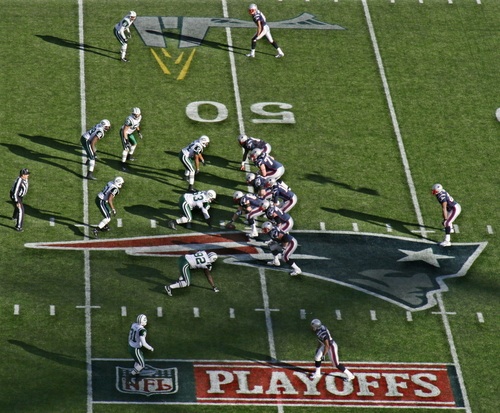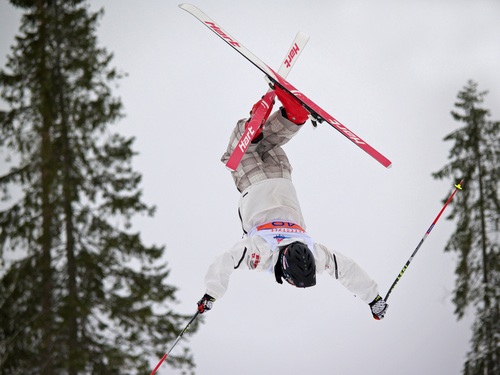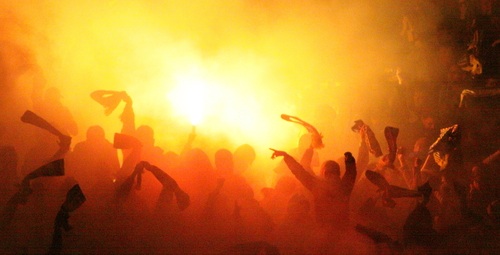As the entire planet gears up for the World Cup kick-off today, insurance broker Aon will be watching the matches unfold from an entirely new vantage point. On June 1, the company began a partnership with the world’s most iconic soccer team, Manchester United, and Aon’s corporate logo will now grace the team’s jerseys for the next four years. Since the World Cup is a competition between countries, not club teams, Man U will not actually be participating, but many of its players, including superstar Wayne Rooney, are playing. So for a company that just became the highest-profile soccer sponsor on the globe, there is of course a new-found excitement for world-class soccer, no matter the venue.
I recently exchanged some emails with David Prosperi, Aon’s vice president of global public relations, to chat about how the sponsorship came about and how he thinks it will affect Aon’s image in the world. He also gives us his World Cup picks.
Jared: Recently valued at $1.87 billion by Forbes, Manchester United is the most valuable sports franchise in the world (much to the delight of this Red Sox fan/Yankee hater). Getting the Aon name on their jerseys is obviously huge exposure. How did this opportunity come about?
David Prosperi: The opportunity came about in 2009 when Manchester United was searching for a new global partner and shirt sponsor. Greg Case, Aon’s president and CEO, received a framed Manchester United team shirt with an invitation to be considered as the new sponsor. The team invited just a few global firms to tender for its key sponsorship. We thoroughly researched the opportunity, did our due diligence on the team, and we are very pleased that Aon was selected because we feel it is the perfect way to communicate the value we bring to people and businesses.
Jared: What was Aon’s main motivation for aligning with the soccer powerhouse?
Prosperi: We wanted a global platform that would unite our firm, help us generate new business and maximize the efficiency of our global marketing investment. Manchester United has a truly global reach, and they share our values of leadership, teamwork and a passion for excellence. Manchester United is an organization with a proven return on investment in a sponsorship relationship, and it creates the ability to directly support sales and revenue-generating efforts for our firm on a global basis — particularly in emerging markets such as China, Korea, Singapore and Brazil where the club has extremely strong brand awareness. With the #1 brand in the world’s #1 sport, Manchester United’s 333 million fans equal the total population of the U.S., Canada and Australia, and they sell more team shirts than the 32 teams in the National Football League combined.
Jared: Besides just the corporate marketing benefits, I know there is a large charity side to all of this. What types of initiatives will we see in the months and years ahead from this Aon/Man U partnership?
Prosperi: We hope everyone will see some ongoing charitable initiatives that unite our global colleagues and generate some impact in the communities in which Aon does business. On June 1, we kicked off our partnership with Manchester United by doing a charity event in Old Trafford (the team’s stadium) with a Penalty Kick Challenge that generated over ,000 (about for every global Aon colleague) to The Christie, a U.K. cancer treatment facility in Manchester that our office in Manchester has supported in the past. Around the world, Aon colleagues participated in “Aon United REDy Day” to raise money for their local charities by wearing Manchester United shirts or red clothes for the day. And on July 15, we will have “Aon United Day,” which will have our colleagues in over 120 countries participating in fundraising and volunteer activities in concert with the unveiling of the new Manchester United shirt with the Aon logo.
Jared: How does it feel to know that kids around the world – even some without TVs in developing world villages – will now see their heroes like Wayne Rooney wearing your company’s name on their chest?
Prosperi: We feel very fortunate and honored to be only the fourth shirt sponsor for Manchester United. Football is dynamic and competitive. It appeals to a global audience. It transcends cultures and people, and it brings communities together like no other sport. For example, in Asia you will see that in many countries in the region fans have taken Manchester United to their hearts in as passionate a way as the club’s domestic fans.
That passion is what really attracted us to this opportunity. It also speaks to the power of the Manchester United brand. Most football fans, whether they support Manchester United or not, would agree that the club has helped spread interest in the sport around the world, particularly the English Premier League, which in turn has benefited all teams in terms of more lucrative television rights and sponsorship deals.
Jared: OK. Last question … two-parter. Who are you rooting for in the World Cup? And who do you think will win?
Prosperi: Personally, I am hoping that the U.S. team performs well. I think that Brazil is the favorite to win, with England being the sentimental favorite.



